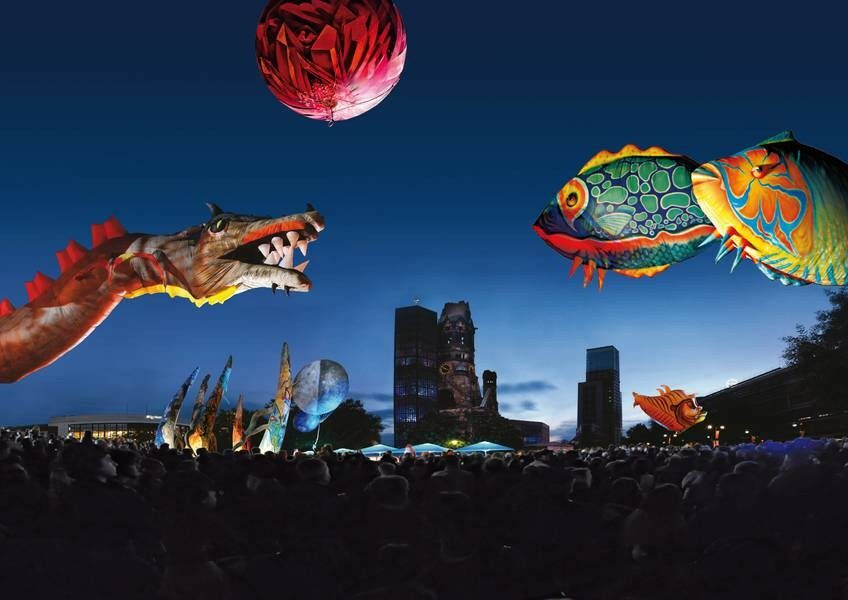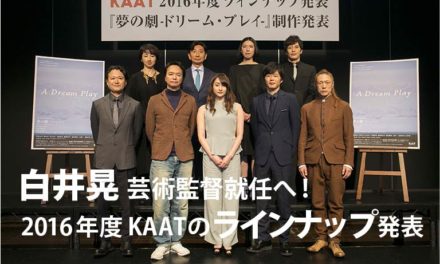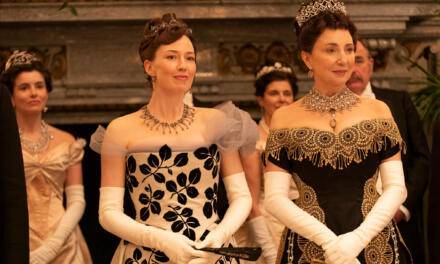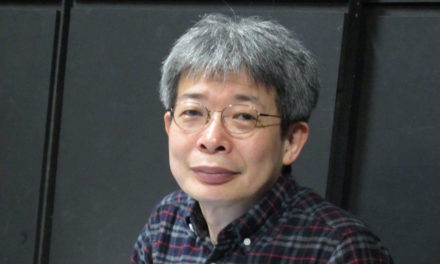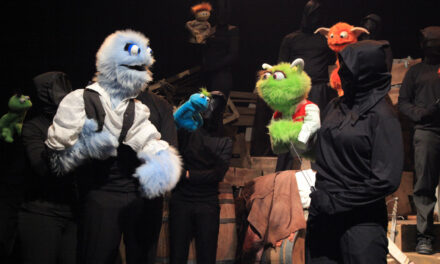In August and September, the street theater collective Plasticiens Volants (PV) return to Artpark (Aug 22) and KeyBank Rochester Fringe Festival (Sept 13 & 14), two major public space festivals in northern New York State, this time with the story of Pearl: Secrets of the Sea.
Plasticiens Volants’ creations are inspired by a variety of subjects ranging from scientific advances (for example, the Big Bang) to visual and fantasy tales.
Before leaving for the United States, Marc Bureau and Thierry Collin from the company answered our questions.
Nicole: Could you tell us more about your creative process about Pearl. Do you start from a story (novel, legend, current event…) or a drawing made by one of you or by another? How much time do you spend on a creation? What are the different crafts involved (construction, drawings, costumes…)?
PV: Inspirations can be very diverse, but with the constraint of using universal themes or environments. It must speak to everyone, of all ages. Then, it is our desires that guide us. It can be fiction, stories, a comic book, a scientific field…
In the case of Pearl, we were interested in the marine aquatic universe. Curiously, the shapes inspired by the marine environment adapt very well to our puppets in terms of fluidity. Strangely enough, birds are less suitable for this. This is the difference that can exist between the kite technique and ours, the first seeking to avoid the wind which is rather an obstacle, the other seeking it as a support.
As for the story, we had a lot of ideas, and it was very quickly designed. The show recounts the journey of a pearl escaping from its shell, an adventure full of discoveries and dangers. Our objective was to create a story for all audiences, “familial” and foremost poetic by transforming the street into an underwater space. The audience was and still is invited to immerse themselves in our large aquarium. The show Pearl evokes a part of the beauty of the world, encouraging people to preserve it.
There is also something in our history about solidarity, our “pearl” does not come out of it alone. Calm and poetry would then be a message to the frenzy…
Nicole: Your work is close to the art of puppetry since you handle these huge balloons from the ground. –Why did you decide to invest this immense space, the sky?
PV: Marc Mirales, the company’s founder, started with a hot-air balloon on which musicians could sit and become visible to everyone. He then embarked on the development of inflatable animal shapes and he was attracted to put them into action. It was off to a long adventure with the sky as a theatre. But the ground is not only a technical space for manipulation, but also for play, the non-flying inflatables offering other possibilities, the costumes circulating in the audience creating proximity. Interactivity with places in which we play involves the training of local actors who join our shows.
Nicole: Visually the action is above our heads, but you are very active on the ground.
How do you choose the space where you will play? What are the most important elements for public circulation and is this traffic part of the scenario? Do you re-adapt the story according to the place? What were the surprises?
PV: Pearl is a very modular show, which can be presented as a parade or in a single place, sometimes mixing the two. The story always remains the same, it is the staging that is adapted. The geography of the places influences the location of the actions. We especially try to make the appearance of inflatables magical, whether we have a structure emerging from a street that seems too small or at the top of a hill… We have less control over the density of the audience we discover when we play. But finally, when the audience realizes that the show is not unfolding in a frontal way but all around them, they create the spaces themselves because no place is better than another.
Nicole: Among all your travel experiences, have you noticed very different reactions from one country to another? What were the most important public reactions you received?
PV: Some audiences are more expressive than others, more or less involved and participatory. This may seem misleading because a lack of reaction does not necessarily mean poor reception of the show. Recently, we were surprised by the lack of applause in China. When there is a text, especially if it has a poetic form, translation is more complicated outside Latin languages.
But if there are differences, they are not that important. In about thirty years of travel, we have noticed that globalization of behaviors is gradually taking place. More and more the codes are the same.
Compared to our relatively large number of trips around the world, we will have to (we should already!) take into account climate change. Our creations will certainly have to integrate more local people that we will train specifically for the show in order to lighten our distribution. We will have to optimize our distant trips by playing several times on longer stays. In the future, this concern will become vital and will have a major impact on writing.
Among the most memorable memories, a representation in Cambodia stands out. That was about twenty years ago when there were still some Khmer Rouge maquis left. We played Don Quixote, a story foreign to Asian culture. More than five thousand people were waiting for the start when heavy rain drowned the scenery. It was three hours late when we were able to start. The audience had not moved despite nightfall and the nocturnal dangers of Phnom Penh. The need to gather for collective pleasure was stronger. Street shows also have this function. Something similar happened in Croatia in the aftermath of the Balkan war. The theater is useful beyond mere entertainment.
Thank you very much.
We are looking forward to seeing Pearl soon in Artpark and/or Rochester!
Interview conducted by Nicole Birmann Bloom, Program Officer, Performing Arts.
Translation into English by Lou Gaudin.
This article originally appeared in frenchculture.org and has been reposted with permission.
This post was written by the author in their personal capacity.The opinions expressed in this article are the author’s own and do not reflect the view of The Theatre Times, their staff or collaborators.
This post was written by Nicole Birmann Bloom.
The views expressed here belong to the author and do not necessarily reflect our views and opinions.

